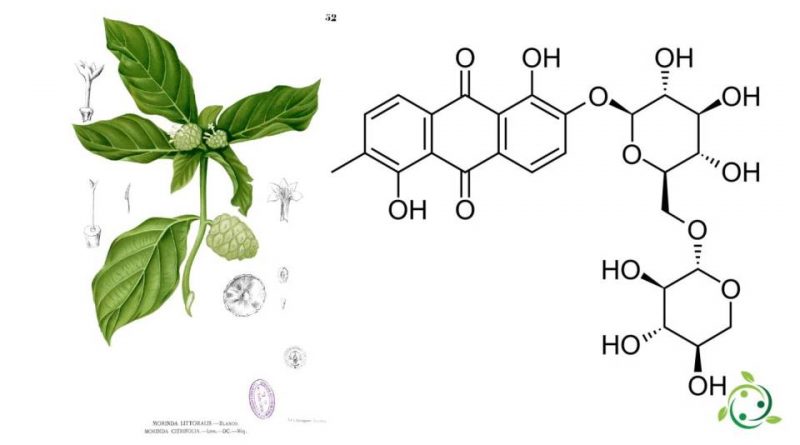Morindine
Morindine
Morindine, whose term in the official IUPAC nomenclature is: 1,5-dihydroxy-2-methyl-6 – {[(2S, 3R, 4S, 5S, 6R) -3,4,5-trihydroxy-6 – ({ [(2S, 3R, 4S, 5R) -3, 4,5-trihydroxyxan-2-yl] oxy} methyl) oxan-2-yl] oxy} anthracene-9,10-dione, is an anthraquinone glycoside with brute formula or molecular: C26H28O14.
Morindine is present in several species of Morinda, in particular Morninda tinctoria (Indian mulberry) and Morinda citrifolia (noni).
The structure and formula of morindine were first determined by Thomas Edward Thorpe and T. H. Greenall in 1887.
Morindine is extracted in nature, in particular, from the root bark of both Morninda tinctoria and Morinda citrifolia
From a physical point of view, morindine appears as a yellow crystalline substance.
From the chemical or enzymatic hydrolysis of morindine, its bright red aglycone, morindone, is obtained.
Warning: The information shown is not medical advice and may not be accurate. The contents are for illustrative purposes only and do not replace medical advice.

